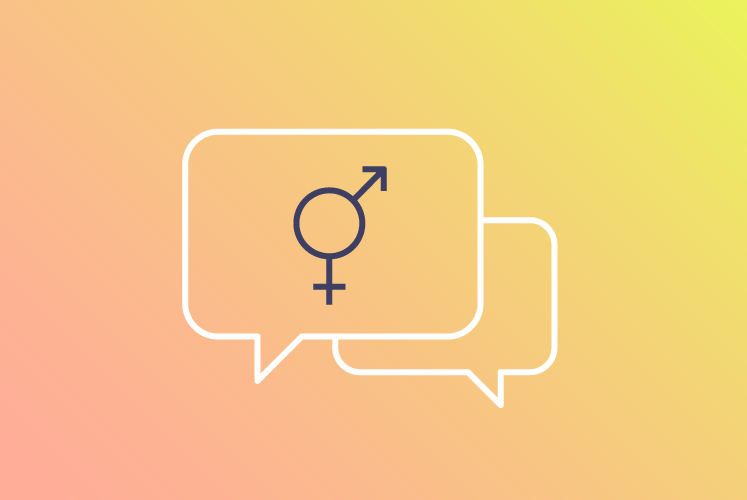How to Create Inclusive Classrooms for All Students

All students benefit from creating a welcoming and inclusive environment that celebrates all student differences, including gender. Some students may identify as a gender that differs than the sex assigned to them at birth, and others may not conform to the traditional gender binary.
School counselors can provide constructive feedback about what they feel are gendered or non-inclusive spaces in their schools. The transition process can already be a stressful time for children and teens, so when a school chooses not to affirm their identity, it can create even more anxiety with binary spaces. School counselors can give caring and insightful commentary on such a complex and polarizing subject. These non-inclusive spaces can also encourage bullying: 78% of kids expressing a transgender identity or gender nonconformity report being harassed by their classmates, according to a report of the National Transgender Discrimination Survey (PDF, 25 MB).
What Is an Inclusive Classroom?
School counselors can work with teachers to evaluate whether classrooms are inclusive. Examples of non-inclusivity include forming boys’ and girls’ lines to go to lunch or recess, dividing toys or games by gender, alternating student seating by boys and girls or using gendered colors (e.g., pink and blue) in the classroom for labels of students’ names or storage spaces.
It’s crucial to emphasize confidentiality surrounding gender issues when educating school staff. The classroom should also be a space that protects a student’s transgender identity should they wish to do so. Teachers can wait to decorate rooms with students’ names until they get to know their students. Attendance lists can be edited so that a substitute teacher or other staff person can use the student’s proper name and pronouns.
Be sure that inclusive spaces extend beyond the classroom. Schools with dress codes or uniforms that differ based on gender should consider a less gender-specific dress code or allow transgender students to wear the clothes/uniform that matches their gender identity. Additionally, school counselors can help staff and students have meaningful conversations about potentially biased beliefs about who belongs in the lead role of the school play, or as prom/homecoming royalty.
Restrooms, gym class, locker rooms and overnight trips are other spaces outside of the traditional classroom where students may feel unsafe or excluded. Schools should make an effort to provide students with access to these areas based on how they identify. Examples include allowing students the option to use private or the facilities that match the gender they live every day. If a student still feels unsafe, the school and student should reach a mutual decision for an inclusive solution.
Pushback from school staff and parents who lack education about gender identity is always a possibility. They might ask, “Why should we make these accommodations when there are no transgender students at our school?” School counselors can remind other staff and parents that not all students may wish to have their gender identity revealed in the school. By fostering inclusive spaces that are free of gender bias and welcoming to everyone, all children benefit.
Action Steps for Educators
Ask for Feedback.
The best way to evaluate whether a classroom or school environment is a welcoming space is just to ask. Invite advocates from organizations that support trans youth to tour the school. Ask students whether they feel comfortable and provide the opportunity for anonymous feedback. Invite a local LGBTQ+ student organization to play an active role in creating a plan for creating a more inclusive school environment.
Tailor a Transition Plan.
Transgender or gender-nonconforming students should have a transition or safety plan that considers the spaces in which they work and play at school. This plan can protect them from a substitute teacher making an accidental name mistake and plan for how they can enjoy participating in sports or other school activities. Ask a student where they feel the most vulnerable and what you can do to make them feel welcome.
See the Bigger Picture.
For a school to be genuinely inclusive, they should focus on not only the needs of individual students but also the school environment as a whole. Zoom out and ask yourself questions such as: What does my current school practices say about gender norms? Does a “Battle of the Sexes” game before homecoming reinforce the gender binary?
When a school prepares and educates its staff and students, it is better equipped to deal with the needs of future students. Consider how your role as a school counselor can create a welcoming space for all students as their authentic selves.
Additional Classroom Inclusivity Resources
Developing LGBTQ-Inclusive Classroom Resources, GLSEN – Educator guide on creating an inclusive curriculum, responding to anti-LGBTQ behavior and implementing social emotional learning in the classroom.
Framework for Gender-Inclusive Schools, Gender Spectrum – Background on the four entry points for the intentional development of gender-inclusive school settings and resources to approach each.
Schools in Transition: A Guide for Supporting Transgender Students in K-12 Schools, ACLU – Handbook on providing safe environments for transgender high school students that is targeted toward administrators, teachers and parents.
Pronoun Guide, GLSEN – Guide for members of the school community to learn how to use people’s correct pronouns.
Gender Support Checklist for Transgender and Non-Binary Students, Welcoming Schools – Set of questions for educators to confirm they have the answers and resources necessary to best support gender-nonconforming students.
READ THE REST OF THE SERIES

A list of frequently asked questions that educators may receive from parents or school staff about the topic of gender identity, as well as strategies on how to shape these conversations.

A set of action steps to support educators in creating a welcoming and inclusive environment that celebrates all student differences, including gender.
Citation for this content: USC Rossier’s online masters in school counseling program.


